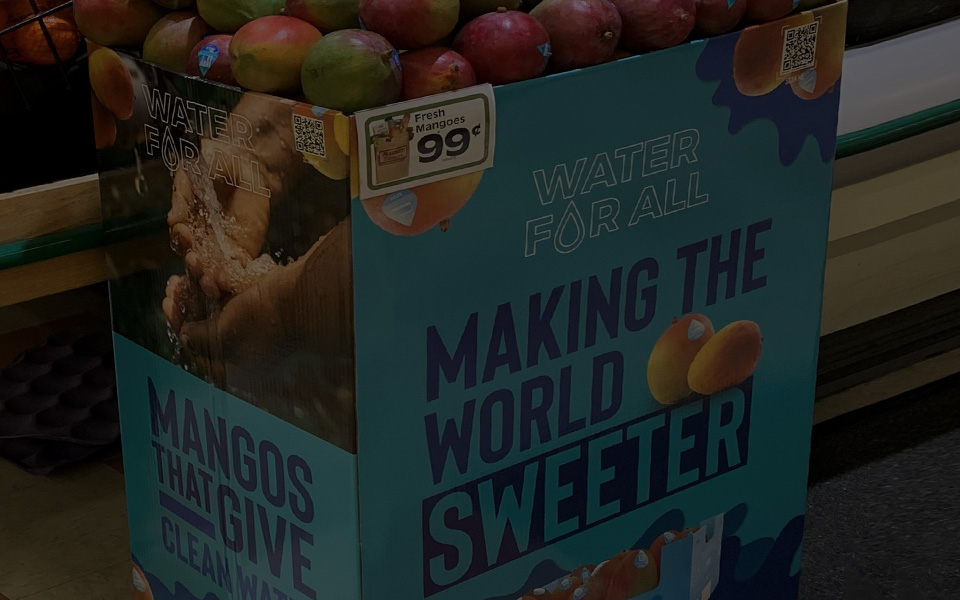To raise awareness about the prevention of food poisoning, the Centers for Disease Control (CDC) have designated September as National Food Safety Education Month. Whether you’re a consumer, provider, processor, distributor, restaurant, supermarket or refrigerated equipment manufacturer, it is important to be aware of issues related to food safety so we can all help to minimize risks of potential contamination throughout the food supply chain.

What’s at stake?
According to CDC estimates, one out of every six people (48 million) gets sick, 128,000 people per year are hospitalized, and 3,000 per year die from eating contaminated food each year in the United States. Although this could potentially happen to anyone, those whom are especially vulnerable include: children 5 and under, adults 65 and older, those with compromised immune systems, and pregnant women.
But the potential costs of foodborne illness outbreaks go far beyond their tolls on human health. Researchers have found that restaurants have incurred costs of up to $2.5 million for a single outbreak of foodborne illness. This may be in addition to brand reputation impact that are more difficult to calculate. Studies have shown that 44 percent of consumers will avoid a brand for a few months after an outbreak, while 20 percent have reported in surveys that they never intend to make a return visit or purchase anything from that brand again.
How to protect yourself
Foodborne illnesses occur when food becomes contaminated with harmful bacteria, parasites, viruses or toxins. Common types of bacteria associated with raw or undercooked poultry include campylobacter and salmonella. Fruits and vegetables (such as leafy greens) can become contaminated with E. coli, salmonella and listeria due to several factors: from unclean water and runoff at a farm; contaminated processing equipment; and from poor hygiene during handling and preparation.
It is critically important for anyone preparing food to maintain proper holding temperatures as part of ensuring food safety. This also often maximizes food quality and shelf life.
So, when it comes to preparing your own food, the CDC recommends four simple steps to protect yourself and your family:
-
- Clean —Wash hands, utensils and cooking surfaces.
- Separate —Keep raw meat, poultry, seafood and eggs separate from cooked food and fresh produce.
- Cook —Use a food thermometer to make sure foods are cooked to an internal temperature sufficient to kill potential germs.
- Chill —Refrigerate perishable foods and leftovers within two hours; chill within one hour if ambient temperatures are above 90 °F.
But what about the food we buy at restaurants, food trucks or supermarkets? One-third of Americans eat fast food every day, and more than 60 percent have dinner at a restaurant at least once a week. On its way to those points of sale, food passes through multiple hands and stakeholders throughout the supply chain, each with a responsibility to help ensure food safety and quality. Here are a few more common sense tips to consider when dining out or buying from your local grocer.
- Shop smart —Choose tidy, well-kept establishments with clean tables, aisles and floors. Some cities/states require facilities to post their cleanliness ratings. If you live in one of those regions, ask for the location of that
- Ask questions —Inquire about how items on the menu are prepared, how grocery items are stored, and any other pertinent information about the source.
- Inspect your selections —Look for holes, tears or openings in food packages. Frozen foods should be solid throughout with no signs of thawing. Refrigerated foods should feel cold.
Ensuring safety in the food supply chain
While most of these tips can also apply to the food supply chain, ensuring adherence to them from farm to fork is an even more complex challenge for producers, processors, distributors and others in the food supply chain. By the time food reaches consumers, there are potentially any number of handling and temperature excursions that could have taken place. There are also an ever-increasing number of food safety regulations and documentation requirements that stakeholders must comply with.
Today, Emerson is helping leading food supply chain providers, processors, warehouses, distributors and retailers ensure food safety and protect their brand reputations. Building upon our foundation of refrigeration expertise, we’re providing solutions to help operators at nearly every point of this process to help form a comprehensive, unbroken cold chain. From connected, communicating devices and enterprise management software to temperature loggers, trackers and probing devices, we’re helping our customers achieve cold chain temperature certainty and food safety verification throughout its journey to consumers.

Six Ways to Reduce Food Waste by Tracking the Supply Chain
*Emerson’s Climate Technologies business is now a new standalone company: Copeland. Over the next...

Protect Valuable Shipments in High-Crime Areas
*Emerson’s Climate Technologies business is now a new standalone company: Copeland. Over the next...

Real-time Tracking Protects Valuable Mango Cargo
*Emerson’s Climate Technologies business is now a new standalone company: Copeland. Over the next...
